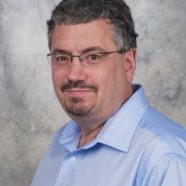 Eric Levine, PhD University of Connecticut Health Center, Farmington, CT
Eric Levine, PhD University of Connecticut Health Center, Farmington, CT Pathophysiology in a human stem cell model of Angelman syndrome
$120,000 – 2-years
The discovery of genomic reprogramming of human skin cells into induced pluripotent stem cells (iPSCs) provides a novel way to model human diseases with complex genetics. By reprogramming skin cells obtained from patient samples, cell lines can be isolated that have the potential to develop into functional brain cells. We have recently succeeded in reprogramming skin samples from AS patients, as well as age-matched control subjects, into iPSCs, and then differentiated the iPSCs into functional brain cells that maintain the specific genetic profile that is seen in AS patients. The proposed research will use these patient-specific cell lines to explore the underlying physiological and morphological defects in the brain cells of AS patients. Establishment of a human cell culture model of AS provides a unique opportunity to understand the cellular mechanisms that underlie the behavioral and developmental deficits observed in AS patients. This model may also be valuable for identifying novel targets for drug discovery and for screening potential therapeutics aimed at ameliorating and/or curing the seizures, movement disorders, and language and cognitive impairments in Angelman syndrome.

